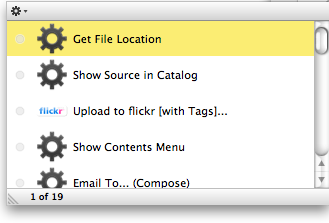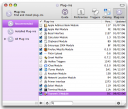The most common example of using Quicksilver is to quickly launch programs, folders, and documents. Quicksilver is called by assigned hotkeys (for me it is ctrl-space). Once you type just two or three letters from the file name, QS will prompt you to run it. This saves a lot of time.

(click on the picture to enlarge)
QS is a smart program. It remembers the most frequently called files, «understands the errors entered (for example, the application will guess when entering ffox that it is talking about Mozilla Firefox).
Quicksilver's capabilities are not limited to running programs alone. Dozens of actions can be provided for each file or application — opening a file, uploading it to some server (for example, pictures can be uploaded to Flickr), sending by mail, etc. How convenient it is!

Quicksilver has a modular architecture, so the functionality can be expanded by connecting plugins. A lot of them have been created, there is even a Gmail module.
QS makes working with the clipboard more convenient. Just like in Windows, the Makovsky buffer stores only one copied text fragment. And Quicksilver can remember a lot of fragments (their number is determined by the user).

Here are some links with examples of using Quicksilver:
43Folders about Quicksilver — http://www.43folders.com/category/quicksilver /
TUAW about the basic principles of work — http://www.tuaw.com/2006/03/11/getting-started-with-quicksilver-understanding-the-basics /
How to take a screenshot, change the file format, image size and upload to the server — http://dwev.com/archives/2007/04/09/quicksilver-capturing-screenshots-and-uploading-to-web /
How to manage iTunes using Quicksilver — http://macapper.com/2007/05/09/how-to-control-itunes-with-quicksilver /
Well, the most important question is whether there is an analog for Windows. Recently appeared, called Skylight, requires installation.NET 3.0. But with its own jambs — for example, the default call is made by alt-space! :)

[Quicksilver] [Skylight]